




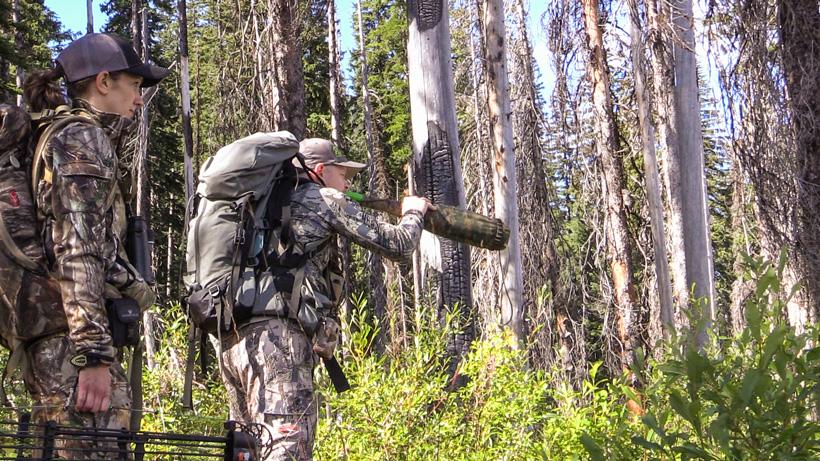

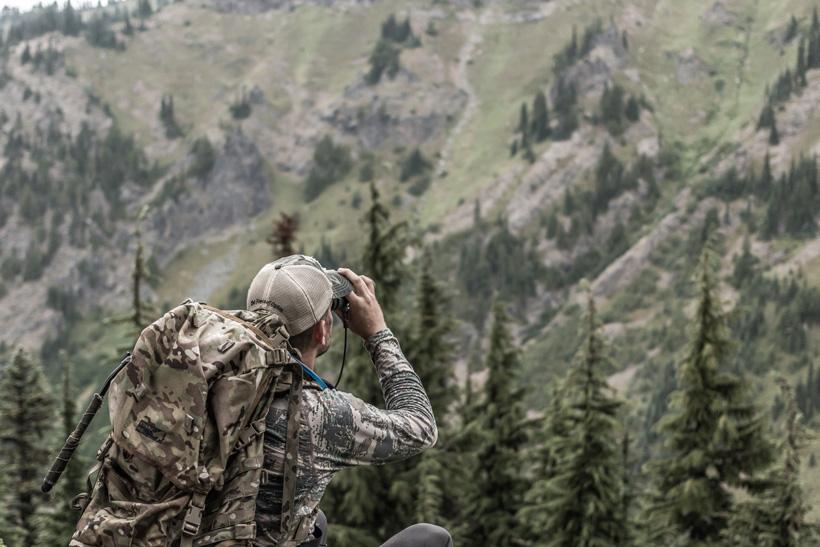

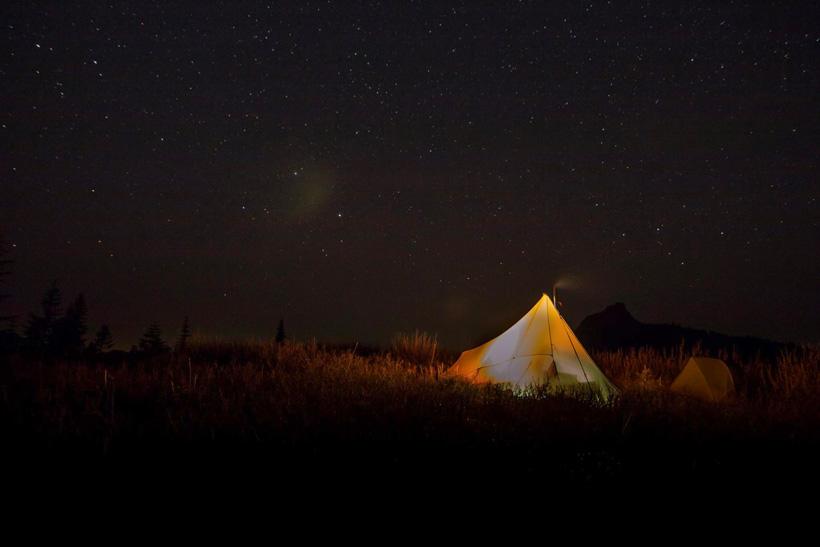

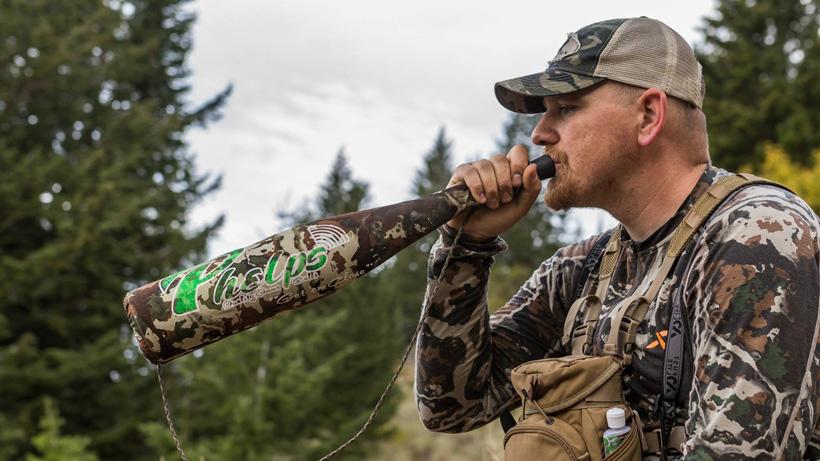

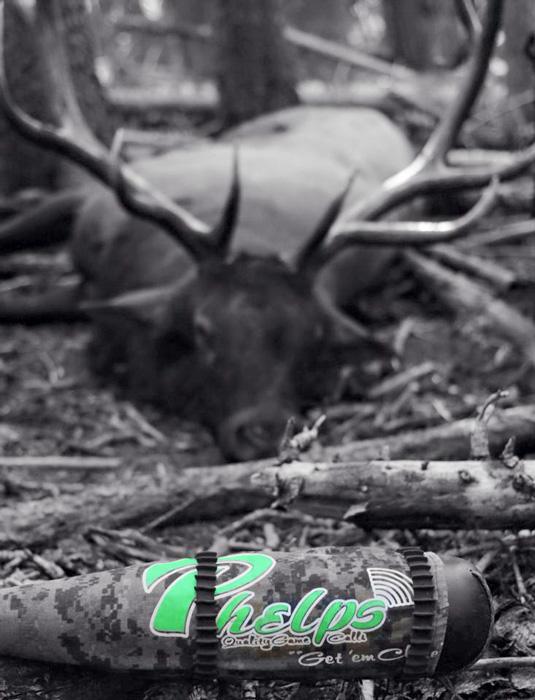

While some may find listening to other archery elk hunters talk about their failures boring or ”one of the downsides of owning a call company,” I do not agree. Instead, I consider it being fortunate. Not only do I get the opportunity to listen to all of the “mistakes” other hunters make, but I can easily relate them to my own experiences. As much as I want to know what works I also want to know what is not working because that is how I am going to be able to avoid the same mistakes.
The other thing to consider is… this is ELK HUNTING — where the only thing that is for certain is that nothing is for certain. What does not work one time may work flawlessly the next and what strategy has been working may all of a sudden fail.
Below are some of the most recurring and common mistakes that I hear about:
As an archery elk hunter, nothing fires us up more than letting out a bugle and getting a response. So why not do it again and again and again? Chances are the bull will continue to bugle back as long as you are in the same location, but as you move toward the bull in pursuit, resist the urge to bugle once you know the bull’s location. Instead, check the wind and try to get within 100 yards of where you think he is. Ideally, he will continue to bugle as you are moving in and allow you to pinpoint his location. If not, try to get to where you think he is before making another peep.
Why does this not work? Imagine you are sitting in the back of a restaurant with your wife and some loud mouth guy walks in the door and starts yelling at you from across the room. You may choose to reply back at first, but as he continues to get closer and you feel he is a threat, you have the ability to walk out the door and leave, avoiding conflict. But if that same guy walked across the room and did not say a word until he was in your face, you are left with no choice but a confrontation.
Elk act in a similar way. The bull’s number one goal is to keep as many cows through the estrus cycles as he can. Avoiding confrontation when a bugling elk or hunter is approaching is his strategy to make sure that happens.
Most of the time, bugling your way in results in chasing or shadowing a herd. The elk are faster than we are and it is obvious they are going somewhere predetermined. In my experience, it is difficult to kill a bull you are shadowing. Instead, I try to quietly get in front of them or, if the pressure is low in the area, wait in order to try to get in front of them the next day.
It is important to resist the urge to bugle once you have located a bull. Make your best guess to his location, check the wind and try to get within of 100 yards of where you think he is. Ideally, he will continue to bugle as you are moving in, which allows you to pinpoint his location.
You have spent countless hours dissecting Google Earth. You have picked the perfect spot to set up the wall tent, found the perfect spike out locations and the drainage where you are going to kill your bull — all before the season has even arrived. The only problem is when you get to your selected spot, you cannot turn up an elk. Maybe the same spot the year before was loaded with elk and now there is nothing!
Many hunters do not like change. They like the comforts of an area they know and they do not like the hassle of having to find a new location. The only problem with this plan is that you cannot force elk to be where they do not want to be. Elk are where they are and it is our job to find them.
Finding elk may be as simple as a change in elevation within the same drainage or it may be as involved as moving camp and heading to the other side of the unit. Regardless if there are not any elk in the area, I move after a day or so to find an area that is currently holding elk. By staying mobile and lightweight, we are never tied to one area and can easily move to an area that is currently holding elk. Do not get fixated on hunting a specific area.
This topic is more of a generalization of a hunter’s inability to put enough thought into what he is doing.
Elk need food, water and bedding (security/cover) to survive. It seems simple enough. Find a spot with south facing slopes or meadows for food, creeks or springs for water and a couple of timbered or brushy benches for bedding areas and you should have a perfect recipe for elk. Unfortunately, just because it looks like it could attract elk, it does not mean it is going to. You must also read the available sign (rubs, tracks, scat, bugles and any other information you can uncover) to figure out where the elk are and determine their routine.
Every year, I hear of hunters planning their hunt around the moon phase and cutting their own opportunity. The rut is triggered by the declining photoperiod so it will typically be at the same time every year regardless of what the moon phase is. While understanding how the moon phase affects elk behavior, do not let it solely determine how many days you hunt. I only have so many days available and I am going to be hunting as many as possible.
The moon will change elk behavior. When the moon appears “fuller,” the elk tend to do the majority of their breeding and become more active through the night. I understand that this is important information to have as a hunter, but the “fuller” moon also affects how much time I have to hunt, resulting in less time in the morning and evening when the elk are transitioning between feeding and bedding.
There are no shortcuts. The best way to learn is to get out in the field as much as possible. Develop and try tactics to see what the outcome is: live and learn it.
There are some ways to expedite the learning process. One of the best ways is to listen to successful elk hunters. Listen to as many as possible in order to get an idea of their strategy and tactics. This will enable you to pick out the similarities and common tactics used in order to incorporate them into your own style. Read elk hunting articles and books. The very best way to take years off the learning curve is to hunt with someone who is successful and willing to mentor you. This gives you the ability to see everything from how they move through the woods, look at the sign, call, move on elk, etc.
When you are tired or burnt out, are you the guy that talks yourself out of an opportunity? The mental part of the hunt is as real as the physical. Are you the guy asking questions, like what time is it? How far away are we from the truck? How bad is this pack out going to be? I wonder if there is a closer bull? If you constantly ask these types of questions, then understand that they will keep you from an opportunity.
In our hunting party, we have made it a point to no longer ask these questions — no matter what. Of course, this means that you need a bulletproof and mentally tough elk hunting partner. Any partner that is able to breed doubt will almost always be able to talk you out of going up or down the mountain after a bull. Because of this, we try to be the hunting partner that will never let you pass up on an opportunity on a bugling bull or a bull that we have located with optics.
Make sure that everything you do is for the benefit of your success. If you aren’t in elk, don’t take a nap during the midafternoon. Use the afternoon downtime to explore new basins or different levels and elevations in the basin that you are hunting. You should always try to do everything you can do toward notching that tag.
The bulls that you are trying to kill are thinking about two things: cows and fighting. The herd bull is focused on breeding as many cows as possible and keeping all the other bulls away. The satellite bulls are trying to steal as many cows away as he can and not get whipped in the process. That is the bottom line of elk. It is straightforward and simple. You should try and feed off of those emotions that will get those bulls fired up and into archery range.
Without hunters interrupting nature, the bulls will typically advertise themselves and cows will go to them. If we use cow calls alone we are trying to reverse nature and call the bull to us. This can work with satellite bulls as they have nothing to lose. With bigger herd bulls, they can be reluctant to leave their herd to come check on one new cow advertising herself. That bull risks potentially losing his herd to another bull in the process. Instead, when trying to kill a herd bull, bugling is a great tool to lure that herd bull into range. We need to feed on that aggressive side of the herd bull and paint the picture that we are a bull inside the red zone and challenging him for his cows. Bugling can also work on satellite bulls as they are attracted to the action.
From 1999 to 2003, I spent countless hours just watching elk during the rut and taking notes. I wanted to know what the herd bull was doing when there were other satellites around and I wanted to see what a herd bull was doing when no other bulls were around as well as what the group of feeding satellite bulls were up to. My 4-inch three-ring binder full of notes and research concluded the following: ”Elk do and say what they want to without any rhyme or reason when it comes to calling.”
My strategy is simple and requires very little thought: Get in tight enough to make yourself one of his cows. Make an estrus whine to let the bull know you are there. Next, let out a challenge bugle that tells that herd bull that you are there to breed/steal his cow. It may seem boring, but outside of location bugling, those are the calls I use 95% of the time.
“Jason, what is your best small bull bugle?” “Do you have a spike squeal?” “If I call too aggressive I’m afraid I will scare the elk.” While I recognize there are many ways to be successful and I always encourage hunters to continue doing what they are doing to be successful… are they missing out on opportunities?
I want to go into the woods and sound like the biggest bull I can. I want to pose a real threat to the herd bull and make him believe I have the ability to take over his herd. It is important to understand the dynamics of an elk herd in the wild.
The herd bull has already established dominance. He spends his time checking on cows and warding off other satellite bulls intruding on his harem. He spends more time and effort on the mature bulls as they pose a serious threat or risk to his group of cows.
Calling like a herd bull will also give you opportunities at satellite bulls. Smaller bulls are curious and are looking for a piece of the action any way they can get it. This is why it makes sense that they would also be attracted to a large bull bugle mixed in with cow sounds. It is the same reason that the satellite bulls hang around the real herd bulls.
The other reason to call loud is due to the loss of volume. The brush, timber and wide open spaces will swallow the projection no matter how much volume we produce out of the calls. We have done extensive testing on calling from 100 and 200 yards away and there is no comparison to the volume a real bull produces. A real bull at 50 yards bugling in your direction is tangibly loud and can almost be felt in your body. This is something that cannot be replicated.
When trying to locate bulls using location bugles from either a ridgetop or from inside a canyon, I want to be able to reach as many bulls as possible. This helps ensure that we are not walking by bulls that are already in the area. For instance, my hunting partner, Charlie, (an amazing elk caller) can bugle into a big drainage or canyon and not get a response, but I can follow him up and can sometimes get a response from a bull that is further away. The only difference is that I can produce more volume than he does. Fortunately for both of us, we have been able to take advantage of some of these opportunities.
If you want to continue this series, check out part two here.